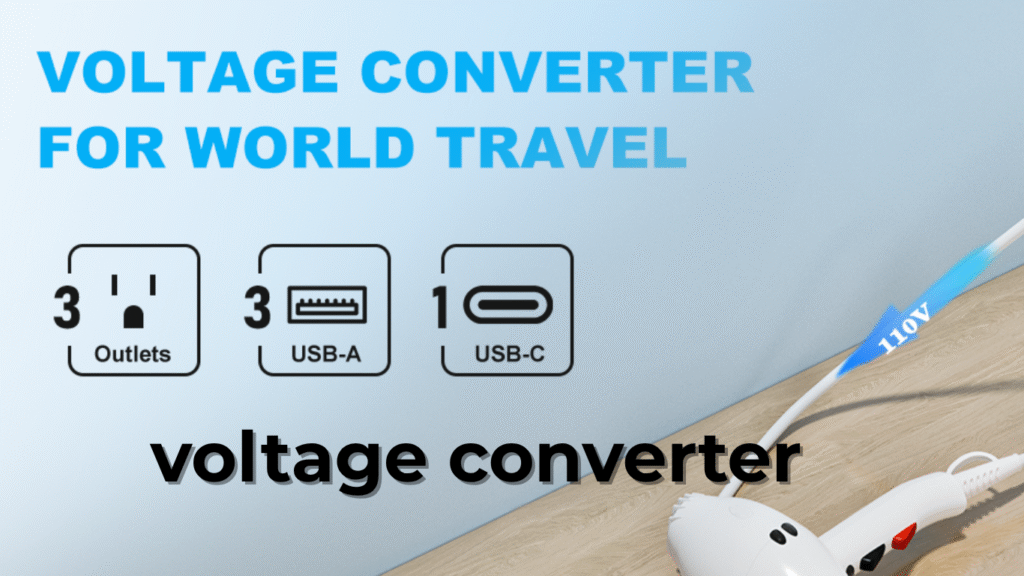Voltage Converter
Convert between different voltage units
Common Conversions
| Unit | Value |
|---|
Note: 1 V = 1000 mV = 0.001 kV
🔌 Ultimate Guide to Voltage Converters: Everything You Need to Know
A voltage converter is an electrical device that changes the voltage of an electric power source to match the voltage requirements of your device or appliance. It’s essential when using electronics in a country with a different voltage standard than your own.
For instance:
- In the United States, the standard is 110–120 volts.
- In Europe and Asia, the standard is 220–240 volts.
Using devices without the correct voltage can lead to:
- Malfunctioning
- Permanent damage
- Electrical fires
A voltage converter safely adjusts the voltage to match your device’s requirement, making it essential for travelers, expatriates, and global gadget users.
🔄 How Voltage Converters Work
Voltage converters operate using electromagnetic components that transform electrical energy from one voltage level to another. They fall into two main categories:
- Step-Down Converter
- Converts 220V/240V to 110V/120V
- For using American electronics in Europe, Asia, etc.
- Step-Up Converter
- Converts 110V/120V to 220V/240V
- For using European/Asian electronics in the USA or similar countries
Some models are step-up/step-down dual converters, offering both functionalities.
🧳 Voltage Converters vs Plug Adapters
Don’t confuse a plug adapter with a voltage converter.
| Feature | Plug Adapter | Voltage Converter |
|---|---|---|
| Function | Changes plug shape | Changes voltage |
| Use Case | Dual-voltage devices | Single-voltage devices |
| Example Devices | Phones, laptops | Hair dryers, irons, heaters |
Many modern gadgets (laptops, phone chargers) are dual-voltage (100–240V) and only need a plug adapter. Always check the voltage label before plugging in.
⚠️ Dangers of Not Using a Voltage Converter
Plugging a device into the wrong voltage can lead to:
- Device failure (fuses blown, motors burnt)
- Fire hazard
- Personal injury
Example: Using a 110V curling iron on a 220V outlet without a converter could melt the device within seconds.
🔍 How to Check if You Need
Look at the label on your device. If it says something like:
cssCopyEditInput: 100–240V ~ 50/60Hz
It’s dual-voltage, and you don’t need a converter—only a plug adapter.
If it says:
cssCopyEditInput: 110V ~ 60Hz
It’s single-voltage, and you need a voltage converter when using it abroad.
🔌 Common Appliances That Require
- Hair dryers & curling irons
- Electric razors
- Coffee machines
- Blenders
- Heaters
- Medical equipment (like CPAP machines)
🛠️ How to Choose the Right Voltage Converter
Choosing the right converter depends on:
- Wattage Rating
- Add up the wattage of all devices you plan to use.
- Choose a converter with 25–50% higher capacity for safety.
- Device Type
- Resistive Load: Hair dryers, heaters (need heavy-duty converters)
- Electronic Load: Laptops, cameras (require lighter-duty converters)
- Duration of Use
- Travel Converters (short-term use)
- Transformers (long-term or permanent use)
- Fuse Protection
- Look for auto-reset or replaceable fuses to prevent damage.
- Portability
- Lightweight options for travel
- Heavy-duty models for home use
📦 Popular Types of Voltage Converters
| Type | Best For | Pros | Cons |
|---|---|---|---|
| Travel Converter | Short-term international use | Lightweight, affordable | Not for continuous use |
| Heavy-Duty Transformer | Long-term or home appliances | Durable, safe for large devices | Bulky, expensive |
| Universal Converter | Multiple regions and voltages | Versatile, dual use | Can be more costly |
💡 Tips for Using a Voltage Converter Safely
- Never overload the converter.
- Let it cool down between uses.
- Don’t use it with surge protectors.
- Avoid prolonged use unless the converter is rated for it.
- Buy from certified brands (look for CE, UL marks).
🌍 Countries with Different Voltage Standards
| Country | Voltage | Frequency |
|---|---|---|
| USA, Canada | 120V | 60Hz |
| UK, Europe | 230V | 50Hz |
| India, Australia | 230V | 50Hz |
| Japan | 100V | 50/60Hz |
🔗 Internal Links (For Your Tools Website)
🔗 External References
📘 Final Thoughts
A voltage converter is essential when dealing with electronics across different countries. Whether you're traveling, relocating, or using international appliances at home, choosing the right voltage converter ensures your devices remain safe and operational.
Understanding voltage compatibility is not just about convenience—it’s about safety, longevity, and performance. Always check your device’s requirements and invest in a quality converter from a reputable brand.

